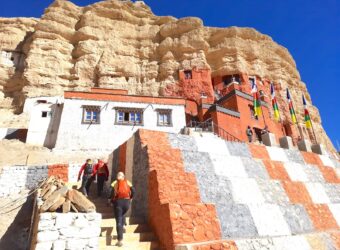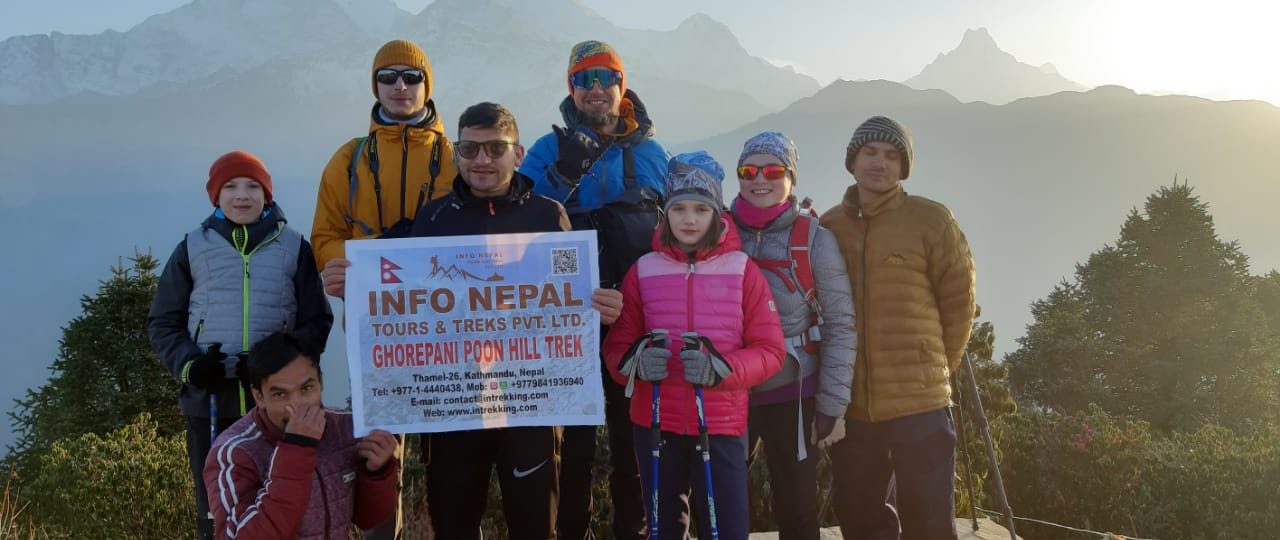
 Written By: Rajesh Neupane
Written By: Rajesh Neupane
When is the Best Time for the Upper Mustang Trek?
Enquiry Form
Upper Mustang is one of Nepal’s most amazing places to trek, which lies in the Annapurna Trekking Region. You can experience ancient cultures and traditions of high-altitude places on this trek. As it is a high-altitude trek, you must learn about the weather before starting it.
This trek takes you to an altitude of 3850 m. The route passes through Kali Gandaki River, leading to a beautiful place, Mustang. You can enjoy magnificent views of many mountains. This place lies in the rainshadow area, making it possible to trek anytime throughout the year.
It is an isolated region bordered by Tibet. The rock paintings, monasteries, and snow-capped mountains are specialties of Upper Mustang. Its high, rocky, colorful cliffs and caves are unique and attractive.
The four seasons of Nepal affect the weather of this place. Knowing about the weather conditions before trekking is a must. Let’s dive into more information about the weather of the upper Mustang.
Best Time for the Upper Mustang Trek
Spring Season (March-May)
Spring is the ideal time to trek the Upper Mustang. The weather is perfect for trekking. The pleasant weather attracts many trekkers. March, April, and May are three months of Spring.
The temperature goes up to 22 degrees Celsius during the daytime. At night, it drops below freezing point. Even though it is cold at night, you can warm yourself in the firelight of teahouses.
The spectacular views of Annapurna, Dhaulagiri, and Nilgiri are awesome. The clear skies and pleasant weather encourage trekkers to move forward. Everything is just perfect in this season.
It is the blooming season. You can see blooming wildflowers all along the trail. The immense natural beauty makes your heart flutter. Temperature begins to warm up. The forests become beautiful. The natural beauty of Spring engages you in the whole journey.
After Spring, the monsoon season starts. So, rainfall is possible in late May. However, there is no rainfall during this season. The trails are in the best possible condition. Tiji festival occurs in May. You can discover the cultural beauty during this festival.
Trekkers keep the trail busy. Many trekkers choose this season to enjoy the best weather. So, tea houses are packed. Make sure to prebook. The journey will be merrier with companions.
Autumn Season (September-November)
Autumn is the best time to trek any part of Nepal. It is the most feasible time of the year. The moderate climate favours trekkers with a comfortable journey. September, October, and November are three months of Autumn.
The temperature ranges from 11 to 20 degrees during the day and -7 to -2 at night. It is warmer during the day and chillier during the night. October and November are the best times of this season.
Autumn is the fall season. The tree leaves change their colour, making the forest look beautiful. It comes after the monsoon, so the weather is clear. But there is a chance of strong wind coming from the north. Make sure you put on windproof clothes.
It is the peak season with the best climate. It is the safest time to trek. The view of landscapes and mountains is breathtaking. It is also possible to trek the Sari Bung ang Teri La pass during Autumn.
There are many trekkers from different countries trekking in this season. It is the busiest season. You can also enjoy Dashain and Tihar with locals. You will get to experience the best journey in this season.
Summer Season (June-August)
Summer is the hottest, with heavy rainfall. It is possible to trek the Upper Mustang even this season because it lies in a rainshadow area. There is no rainfall above Kagbeni. June, July, and August are three months of Summer.
The temperature is scorching hot. It ranges from 20 to 30 degrees during the daytime. At night, it drops up to -3 degrees. You will be sweating a lot during the journey. You get tired easily.
The main advantage of summer is that you can explore more in natural sunlight. Summer has longer days and shorter nights. The sky is clear. You can enjoy the view of landscapes and mountains.
Though it is possible to trek this season, many trekkers avoid it. It is very difficult to trek in a hot climate. There is the possibility of landslides below Kagbeni.
Winter Season (December-February)
Winter is the coldest season. Trekking in Winter is not recommended. After sunset, the temperature starts to freeze. It drops up to -25 degrees at night. It is intolerable. December, January, and February are three months of Winter.
The coldness is unbearable. Many locals migrate to Pokhara and Kathmandu during Winter to avoid extreme cold weather. Only a few villagers stay back to care for animals and the village. There is heavy snowfall in high altitudes.
The locals start packing during mid-December. About 80 percent of locals descend to lower regions. The remaining people survive with proper clothes and firewood. The trails are covered by snow. Many passes are blocked due to heavy snowfall. So, it is closed for safety reasons.
You need heavy packing. If you are a professional trekker, then only you can try trekking in this season. It is very risky. There is the possibility of avalanches. You will need a proper hiking map and cold-weather gear.
Many tea houses remain closed. So, you need a tent and sleeping bags. It is challenging to survive camping in such weather. But people take risks to experience the heavenly winter wonderland.
Frequently Asked Questions
What are the best seasons for Upper Mustang Trek?
-Autumn and Spring are the best seasons for Upper Mustang Trek.
Where is the Upper Mustang Located?
Upper Mustang is located in the Mustang District of Gandaki in Northern Nepal.
How difficult is Upper Mustang Trek?
It is moderately difficult to trek the Upper Mustang.
What is the total distance covered by this trek?
The total distance covered by this trek is 127 km.
Conclusion
Hence, Upper Mustang is a very fun place to trek. The rich natural beauty and culture provide a good vibe. You can trek in Autumn and Spring for a comfortable journey. This seasonal trek allows you to make new friends.
Summer is a good time if you love rain and can tolerate hot weather. Winter is not recommended. But if you prepare well and take precautions, you can trek in any season. here is a detailed guide on Upper mustang trek.